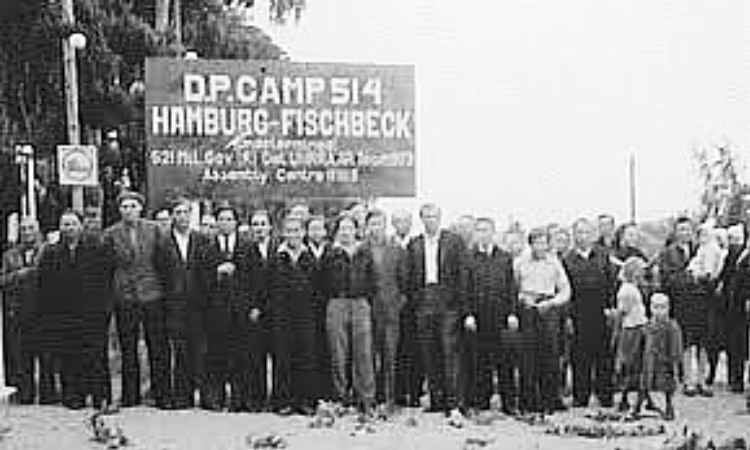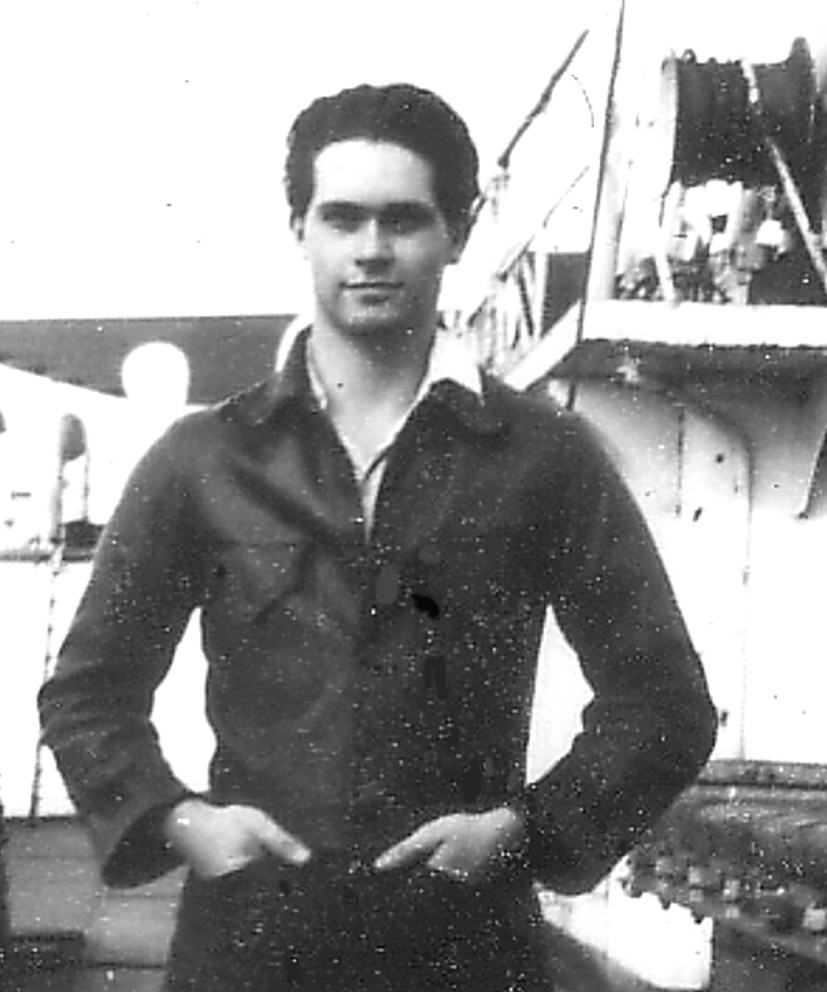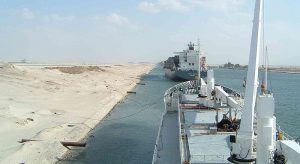Ved krigens slutt i Europa 8. mai 1945 befant det seg ca. 60 millioner tvangsforflyttede sivile i sentral-Europa – de fikk fellesbetegnelse DP: Displaced Persons.
Det var frigitte konsentrasjonsleirfanger, østeuropeere som hadde flyktet foran fremrykkende sovjetiske styrker i krigens siste måneder og tidligere slavearbeidere importert av Nazityskland.
Flertallet av disse menneskene ble tilbakeført til sine opprinnelige hjemland i løpet av et års tid, men de fleste østeuropeere nektet å dra tilbake til sine nå sovjetokkuperte hjemland.
Høsten 1946 var det fortsatt 8 millioner igjen som var hjemløse og det var ennå uklart hvor man skulle gjøre av dem – de var samlet i store leire rundt om i Vesttyskland (som til å begynne med inkluderte den vestlige delen av Østerrike) og i Norditalia. Disse leirene gikk under betegnelsen Displaced Persons Camps – DP-leire.
Det tok tid før Vesten fikk organisert seg – en del land hadde jo vært okkupert, og måtte få orden på sine egne samfunn først.. Det ble løst etter hvert og mellom 1947 og 1953 ble majoriteten av de gjenværende DPer distribuert rundt om i verden.
De som tjenestegjorde i Tysklandsbrigadene 1948-52 erfarte disse DP-ene på nært hold – særlig de som var forlagt i Rendsburg i Schleswig Holstein.
Tysklandsbrigadens 1. bataljon og Ingeniørkompaniet var forlagt i det store anlegget Kingsway Barracks i Rendsburg. Nærmeste nabo var DP-leiren, som lå gjerde mot gjerde . Der holdt rundt 2 000 flyktninger til – Displaced Persons, folk som var fordrevet fra sine hjemland i løpet av krigen som slavearbeidere, konsentrasjonsleirfanger, eller bare hjemløse.
Felles for dem alle var at de ikke turte å reise tilbake fordi landet deres var under sovjetisk okkupasjon eller var blitt til en sovjetisk vasallstat. De hadde vært mange flere, men de var gradvis blitt fordelt rundt om (se nedenfor).
Dette var mennesker uten arbeid, som levde på UNRRA-programmet. Selv om de fikk mat nok, var det jo klart at så mange inaktive mennesker hopet sammen på et sted var et problem. Ca en tredjedel var kvinner – i alle aldre. Det var jo nærmest en naturlov at det ble omfattende prostitusjon av slikt. Men DP-leiren var forbudt område for Ola.
Vi i Brigaden hadde, som alle okkupasjonstropper, et generelt fraterniseringsforbud – det vil si at det var ikke tillatt å opprette varige kontakter med tyskere, uansett kjønn. Vi kunne fritt handle i butikker og gå på bierstuber og spisesteder, men BAOR (British Army of the Rhine) som hadde kontrollen over den britiske sektoren (nordvestdelen) av Tyskland hadde strikte regler for en del steder: Nattklubber og liknende var merket Out of Bounds dvs. adgang forbudt!. Overtredere som ble oppdaget havnet i kakebua. DP-leiren var definitivt Out of Bounds.
DP
Da Vesten fikk organisert seg, ble det et storstilt flyktningeprogram av det. To norske skip var involvert i trafikken, chartret inn av det britiske samveldet, i første rekke MS Skaubryn. De gik i fast rute mellom Marseilles i Franrike og Australia, Canada og Syd-Afrika i første rekke.
- Belgia var det første landet som tro til: I 1947 importerte de 20,000 DPer som arbeidere til kullgruvene – det virkelige antallet var større fordi det var familier med. Programmet fikk en del kritikk fordi det ble sett på som en måte å skaffe billig arbeidskraft.
- Storbritannia tok i mot 86 000 DP som en del av et stort arbeiderimportprogram. I tillegg tok Storbritannia in 115 000 polske soldater som hadde tjenestegjort på vestlig side, og 12 000 ukrainere, i alt over 200 000.
- Canada startet et storstilt importprogram for kvalifisert arbeidskraft med nære slektninger – ved slutten av 1951 hadde Canada tatt imot 157 687 DP.
- Australia ekspanderte sitt tidligere immigrasjonsprogram i 1947, og hadde i 1953 tatt imot i alt 182,159 DP, hovedsakelig fra Polen og Balticum (i tillegg tok de imot flere hundre tusen briter som forlot Storbritannia i samme periode).
- Da Israel ble en egen nasjon i 1948, hadde allerede over 50,000 DPer kommet seg inn i landet, lovlig eller ulovlig. Med helt åpne dører for alle jødiske flyktninger uansett alder, tok Israel imot over 652 000 DP før 1950.
- Frankrike tok imot 38 157 pluss 1500 i Marokko.
- Sydamerika tok nesten 80 000 DP: Venezuela 17 000, Brasil 29 000; Argentina 33 000.
- Norge tok imot 492 jødiske DP, men de fleste av disse reiste til Israel så snart det ble en mulighet.
- USA kom sent inn i prosessen, hovedsakelig på grunn av motstand i Kongressen mot sentral- og østeuropeiske intellektuelle og jøder, Det amerikanske programmet ble allikevel det mest ekspansive, men også det mest byråkratiske. The DP Act of 1948 lot 200 000 DP inn i landet de neste to årene. I 1950 ble loven forlenget i to år, slik at mellom 1949 og 1952 slapp i alt 450 000 DP inn i USA. 137 450 av disse var europeiske jøder.
I 1953 var det fortsatt over 250 000 DP i Europa, de fleste av dem gamle og/eller uføre. Enkelte tok i mot disse på humanitært grunnlag – Norge tok imot 200 DP som var blinde eller hadde tuberkulose, og Sverige tok også imot en del slike. De aller siste ble til slutt akseptert av Tyskland og Østerrike som fullverdige borgere.
Det er til ettertanke at når det gikk så greit å absorbere over to millioner flyktninger inn i moderne samfunn på mindre enn ti år, så var det av to enkle grunner:
-
Alle var av kaukasisk opprinnelse (hvite) – ingen var asiater eller afrikanere.
-
De var alle av nær beslektede religioner: Kristne (ortodokse, katolikker, protestanter) og jøder (750 000) – ingen var muslimer.
Eilif Ness



